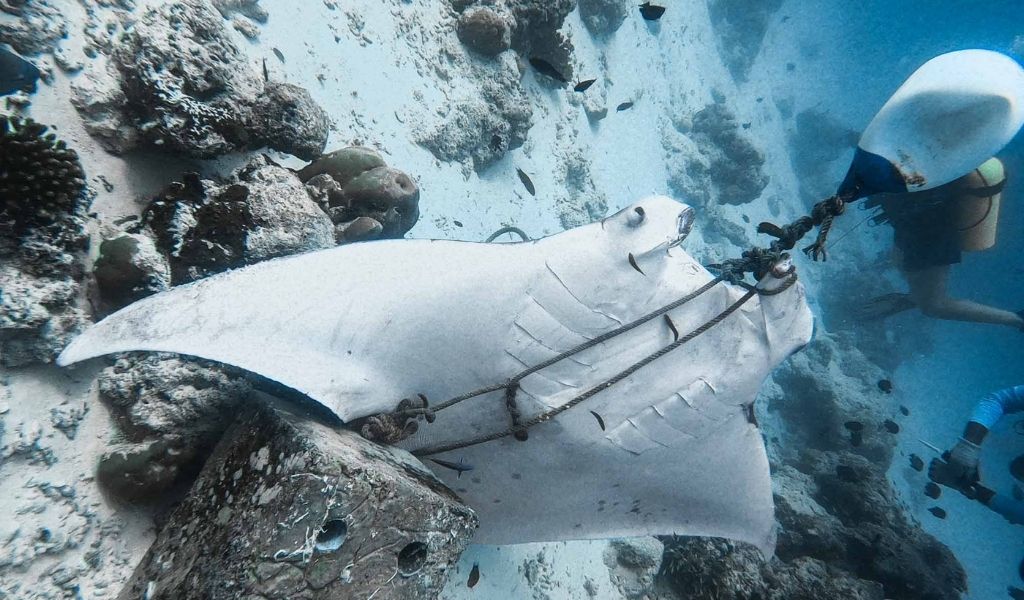
Was The Unfortunate Demise Of This Manta Ray By Entanglement Preventable?
Boat mooring and buoy lines have been widely used in the Maldives for decades. Throughout the years, the number of these lines has greatly increased across the country due to the development of the many tourist establishments. This poses a serious threat to the reef manta ray population of the country. Manta rays are obligate ram ventilators which basically means that they need to constantly swim to breathe. Unfortunately, manta rays cannot swim backward, and nor will they be able to see a thin mooring line directly in front of them as they swim forward. Therefore, entanglements can occur very easily which will quickly lead to asphyxiation and the eventual death of the victim in question.
Tambourine (MV-MA-2801) was an adult male manta that was first identified in February 2011. Since then, a total of 11 confirmed sightings were recorded within the Lhaviyani Atoll. Tambourine was last seen alive on the 27th of December 2020, who was noted to be devouring mouthfuls of plankton at the time of this sighting. Just recently, we learned of the unfortunate demise of Tambourine who was found entangled in a mooring line that had not yet been fitted with mitigation measures to prevent such an incident from occurring.
Reef manta rays are classified as Vulnerable to extinction, and oceanic manta rays are now listed as Endangered on the IUCN’s Red List of Threatened Species. Thus, it is clearly evident that mitigation measures are urgently required throughout the country to address this growing threat.
Manta Trust, a charity registered in the UK has devised some simple actions which can be taken to help prevent manta ray entanglements.
Action 1: Identify all the mooring and buoy lines around the island. Ensure that mooring lines are installed properly so that there is no excess in the line as loose lines cause entanglements way more easily. Ensure that all loose rope or loops are either removed or secured using tape, cable ties etc.
Action 2: Attaching cable ties around mooring roped at 1ft intervals so that the ties extend outwards at the right angle from the rope. In order to maximize visibility of the rope from all sides, attach each cable tie at a roughly 45-degree angle from the previous tie (so that it looks like a DNA helix). This technique makes mooring lines more visible to megafauna, which can spot and avoid them more easily.
Action 3: Prioritizing lines that are in areas known to have frequent manta ray activities such as on house reeds close to channels where feeding animals are sighted
Action 4: Educating people about the measures you have taken to make your mooring lines manta safe
You may read the full guidance here for a clearer understanding.